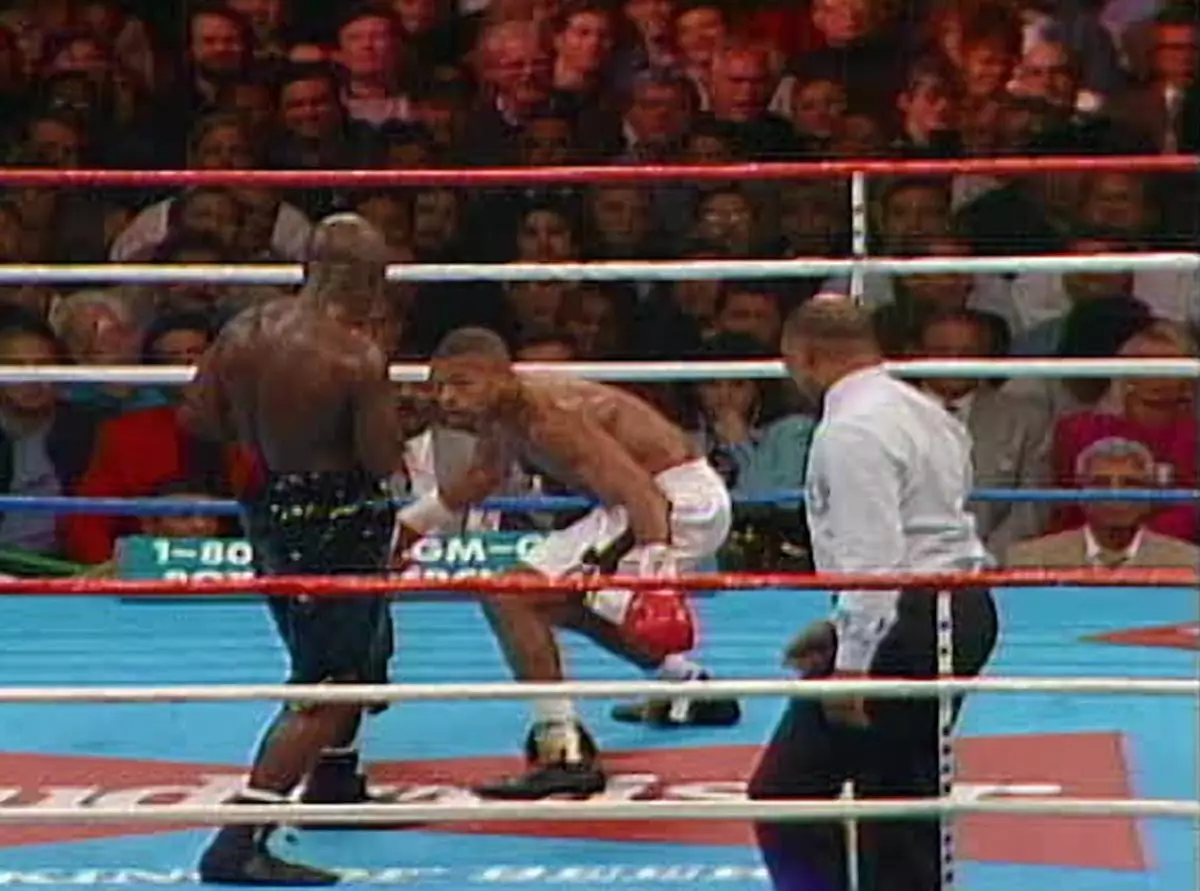The boxing world thrives on rivalries, and few were as electrifying as the clash between Roy Jones Jr. and James Toney on November 18, 1994. Dubbed “The Uncivil War,” the fight was highly anticipated as a potential classic, promising intensity from two contenders who each claimed to be the best pound-for-pound fighters of their time. With Jones entering the ring boasting an impressive record of 26 wins and 23 knockouts, and Toney, the reigning IBF super middleweight champion, holding a record of 44 wins, 2 draws, and 29 knockouts, expectations ran high. This bout, however, morphed from a supposed back-and-forth brawl into a display of one fighter’s dominance over the other—Roy Jones Jr.’s triumph was not just a victory; it was a resounding statement.
Taking place at the iconic MGM Grand in Las Vegas, the atmosphere was electric. Fans filled the arena, their anticipation palpable. With George Foreman’s recent heavyweight title victory still echoed in the minds of boxing enthusiasts, fans were thrilled by the notion that history could repeat itself. Instead, the fight that unfolded was anything but what the spectators had braced for: it was an exhibition of skill, speed, and tactical prowess that left many questioning the legitimacy of Toney’s claim to greatness.
Prior to stepping into the ring, Toney faced considerable challenges in his preparations, notably his struggles to make weight. Reports indicated he had ballooned up to nearly 180 pounds before shedding the pounds for this significant bout. Consequently, many observers speculated whether Toney’s difficulty in achieving the 168-pound limit hampered his performance. While it may not have been Jones’s fault, the physical toll of weight loss could have played a significant role in Toney’s inability to compete effectively.
From the opening bell, Jones exhibited an unmatched level of control and poise. His lightning-fast hands and razor-sharp reflexes allowed him to dictate the pace of the fight, all while exhibiting a level of confidence that was as impressive as it was unsettling for Toney. Jones scored a flash knockdown in the third round, further solidifying his domination. Toney, who was expected to put up a formidable fight, found himself consistently outmaneuvered, unable to establish a rhythm or deliver significant blows that might shift the momentum in his favor.
As round after round unfolded, it became evident that this was not the anticipated showdown. Instead, Jones’s performance bordered on a clinical dissection of Toney’s abilities, showcasing superior ring IQ that starkly contrasted with Toney’s almost stagnant efforts. The fight, intended to be a battle of champions, veered into a one-sided contest that left spectators feeling somewhat disengaged.
The final bell rang, and judges handed in their scores, reflecting Jones’s overwhelming performance: 119-108, among others, did little to encapsulate not just the outcome but the stark reality that had unfolded over the preceding twelve rounds. Toney’s frustration was palpable as he left the ring—an internal struggle between recognizing his own shortcomings and grappling with the humiliation of defeat. In the immediate aftermath, he demanded a rematch, perhaps in vain hope that a more prepared version of himself could reverse the outcome.
While this fight turned out to be a watershed moment in both fighters’ careers, it also served as a poignant reminder that in boxing, physical prowess and preparation are crucial. Roy Jones Jr. walked away not only as a victor that day but also as a fighter who would continue to solidify his legacy until his own moment of vulnerability in 1997 against Montell Griffin. In stark irony, Toney would face Griffin shortly after, experiencing a similar plight of defeat.
In hindsight, the 1994 bout between Roy Jones Jr. and James Toney stands as a crucial chapter in boxing history. What began as an anticipated clash of titans transformed into a showcase of skill and dominance that redefined both men’s careers. Jones’s brilliance shone brightly, casting a long shadow over Toney, who left the ring with more questions than answers. This fight may not have lived up to expectations in terms of competitiveness, but it certainly delivered a lasting impression on the sport and its fans, teaching lessons about preparation, resilience, and the unpredictable nature of boxing.

